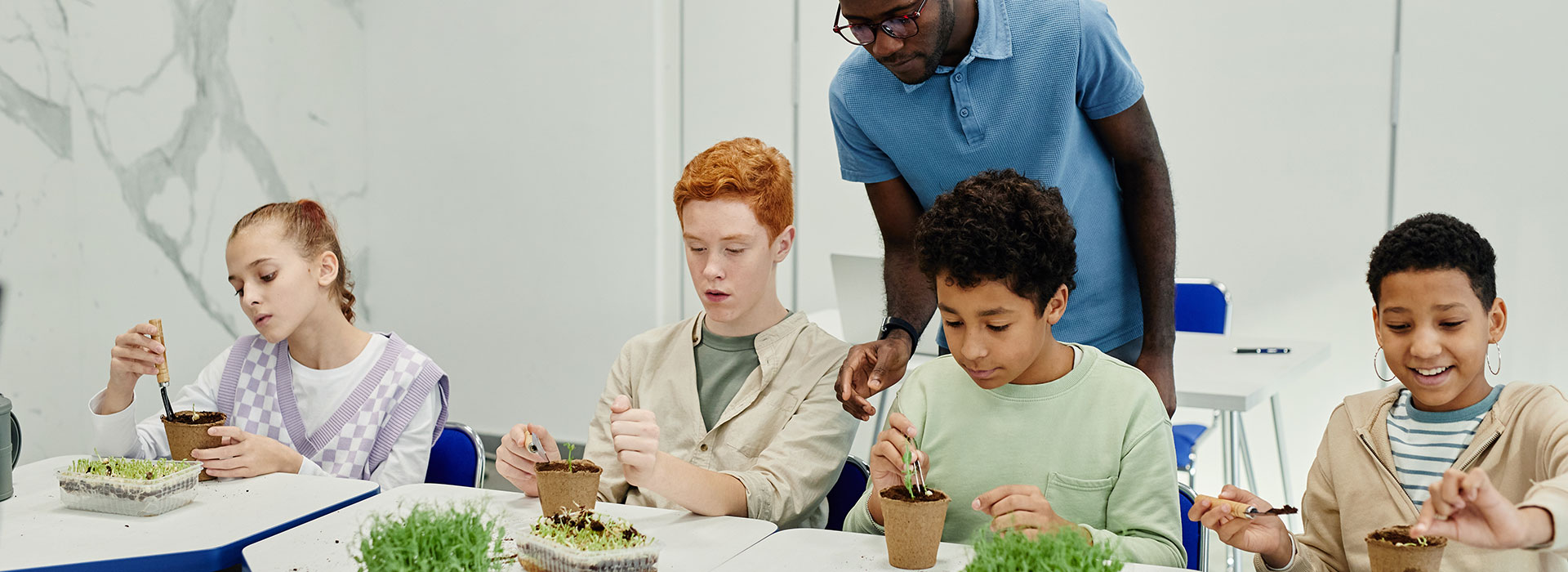Shifting from Traditional PBL to Sustainable PBL
Project-Based Learning (PBL) continues to gain momentum as a powerful instructional methodology. However, outside of public schools that are affiliated with specialized school networks such as High Tech High, or the New Technology Network, it seems challenging to find schools that have genuinely sustained standards-based, and rigorous project-based learning being implemented for sustainability. In my new book, Sustainable Project-Based Learning: 5 Steps for Designing Authentic Classroom Experiences in Grades 5-12, I go into depth on both the what and the how of designing, implementing, and sustaining PBL. Here are 6 qualities that shift PBL to sustainable PBL (SPBL).
Several factors set apart sustainable PBL from traditional PBL. These factors include:
Factor #1: Growing teacher collective efficacy through an intentional student learning goal
Too often when teachers are trained in PBL, they are only trained on how to design a PBL unit. It is important to know how to design a PBL unit and the elements that make a unit a PBL unit. However, if you want to sustain PBL, you need to know how to have ongoing conversations about the evidence of student learning among teacher collaboration teams before, during, and after the implementation of a PBL unit. This will grow what Dr. John Hattie calls “collective teacher efficacy.” Working in collaborative teams not only grows teacher efficacy, but the team provides support and accountability to focus on student learning outcomes.
- The focus is on evidence of learning for both the content and SEL learning intentions.
- The goal format is explicitly clear and the team agrees on the goal
- The goal is specific, measurable, attainable, results-oriented, and time-bound.
- The team creates an assessment calendar that is used to determine what formative assessments you will analyze throughout the process (warm-up questions, weekly quizzes, and project milestones).
- The goal shows an equal amount of respect for both qualitative data (to assess SEL skills) and quantitative data (to assess content knowledge).
- Protocols are predetermined to ensure there is a commitment to what milestones, formative assessments, or other student learning artifacts will be discussed to determine if students are growing in their knowledge, understanding, and application (surface, deep, transfer) of the academic and SEL learning intentions. (Note: If you are working with a team of teachers, determine what specific protocols you will use. If you
Factor #2: Intentionally incorporate an SEL or Employability Skill that connects with your driving question.
For example, if your driving question is: To what extent can you use your knowledge of the past to abolish slavery today? And the learning intention based on the content standard is around historical research, the SEL learning intention could be centered around the CASEL competency of social awareness.
SPBL places an equal emphasis on students growing in an SEL or an employability skill as it does on content knowledge. In SPBL, teachers design an intentional learning intention, success criteria, and tasks centered around both an SEL skill (it could be a CASEL competency or a specific employability skill) and a content standard. In traditional PBL, an SEL skill might be addressed, or mentioned, but not in an intentional fashion as in an SPBL unit.
Factor #3: If the focus of the unit is on students transferring a skill, units can be recycled from year to year by simply changing the context.
The SPBL approach is influenced by Dr. Michael McDowell’s perspective in Rigorous PBL by Design (2017). The SPBL planning template asks unit designers to plan learning intentions and driving questions at the transfer level in a way that allows applications to various contexts. For example, if the learning intention focuses on research, the context for the first year the SPBL unit is implemented might be students researching childhood obesity. The next year, the teacher might change the context from childhood obesity to climate change. The learning intention stays the same (research), but the context changes. This makes units reusable, as the teacher can simply change the contexts of their milestones, assessments, and tasks; they do not have to recreate the unit from scratch. This not only makes the time spent planning more justifiable for the teacher but focusing on the learning intention void of context helps students see how the skill of research can be applied to multiple contexts, not just one. This approach is different than traditional PBL, as it is likely students are only seeing how to apply learning to one context.
Factor #4: Infuse John Hattie’s Visible Learning Strategies within the Context of Your PBL Unit.
Use the table below to consider how Dr. Hattie’s high-impact Visible Learning influences are connected to and should be implemented within a project-based learning unit. Infusing research-based strategies helps make PBL more sustainable, when implemented, you will see the results!

Source: Adapted from Visible Learning MetaX, n.d.
Dr. Hattie’s high yield influences should be integrated within the context of a PBL unit.
Factor #5: Do not create a top-down PBL implementation mandate
Sometimes school districts issue a PBL initiative and create a mandate stating, “all teachers will implement at least 2 PBL units per year.” This is not the approach that leads to sustainability. What you will get is at best is most teachers that will agree to implement PBL simply to comply.
Teaching is an art. Teachers are artists. I would much rather have a small group of teachers authentically engaged in learning about and implementing PBL, than an entire school of teachers who were implementing PBL to comply with a mandate.
Instead of issuing a top-down mandate for PBL implementation, start with a small group of teachers that are genuinely interested. Provide support for this group of teachers. Give them time to co-plan and collaborate. Have these teachers share the evidence of student work produced during the PBL unit, and start your school-wide conversations from this, let the evidence of student learning as a result of the PBL unit do the talking.
Factor #6: When you think of Sustainable Project-Based Learning, think of this Venn Diagram
This diagram summarizes Sustainable Project- Based Learning

The integration of these 3 structures, is what makes PBL truly sustainable.
(1) student growth in social and emotional learning – choose 1 targeted SEL skill that is relevant to your driving question, define it, and give students feedback on their growth in that skill. Integrating the SEL skill makes the “juice worth the squeeze.” You have students growing not only in an academic learning intention but also in an SEL learning intention.
(2) deep conversations about learning through teacher action research – As stated under factor 1, planning the unit is great, but it is the ongoing conversations had about the evidence of student learning before, during, and after the unit that will lead to sustainability of PBL implementation.
(3) student academic growth through project-based learning – Give students opportunities to answer a driving question that empowers them to solve or address a real-world problem, provide them the proper scaffolds and feedback along the way and let them inspire you.
Maybe your school’s PBL initiative is losing steam. Or, perhaps you are getting ready to launch a PBL initiative and you want to ensure that it sustains. Consider these 6 factors to assist.
If your school is losing momentum on PBL implementation, consider these 6 factors.
Innovate and Impact Instructional Practice through Rigorous PBL by Design
The Core Collaborative Learning Network supports systems to ensure classroom educators and educational leaders ensure their students have a balance of surface, deep, and transfer understanding of core academic and 21st Century content knowledge and skills and that they have a command over their own learning.
Learn More!

